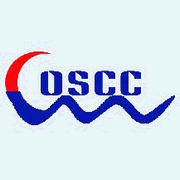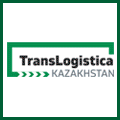ASIA-EUROPE freight rates have once again risen after a brief hiatus over the past two weeks, as spot rates on the trade last week increased 21 per cent to US$1,660 per TEU, according to the latest data from the Shanghai Containerised Freight Index (SCFI).
Asia-Mediterranean rates were also up 19.8 per cent to $1,649 per TEU for the week, an increase of $273 per TEU.
Spot rates to the US west coast rose a marginal 0.5 per cent to $2,031 per FEU, while Asia-US east coast rates remained flat at $3,206 per FEU.
Across all trades covered by the index the SCFI rose 9.5 per cent to 1,347.50 points.
Source Shipping Gazette - Daily Shipping News
MANUFACTURED durable goods growth in the United States increased 2.2 per cent to US$211.8 billion in February due to rising demand for cars, computers and capital equipment, making the fourth month of increases in the last five.
"There exists pent-up demand for consumer durable goods, particularly for motor vehicles, and firms are profitable and need to spend more for both traditional and high-tech business equipment," said Daniel Meckstroth, chief economist of the Manufacturers Alliance for Productivity and Innovation chief economist.
Inventories increased for the 26th straight month up 0.4 per cent to $373.3 billion with storable durables the highest in 20 years when the government began collating inventory data. February sales was an improvement on January, however, when sales slowed four per cent.
In the month of February the shipment of durable goods fell for this first time in two months by 0.4 per cent to $206.6 billion with transportation of equipment down the most at 2.5 per cent year-over-year to $49.2 billion down.
Source Shipping Gazette - Daily Shipping News
BREAKBULK and general cargo, consigned to the dustbin of history by the container revolution, has enjoyed a resurgence in recent times with a mini-boom in project and heavy lift shipping - but desperate containerships are proving to be versatile rivals, says a Drewry report.
"Project cargo is on the rise and much, if not most, of it depends on developing economies, which are faring much better than the old industrial nations." said Susan Oatway, author of Drewry's Multipurpose Shipping Market Review & Forecast 2012.
"However the niche market for the project carriers is not impervious to the competitive threat and added value must be the way forward for many carriers," she said.
"A number of the major lines have invested in open-top or flat-rack containers, designed specifically to carry the heavy, awkward cargo that used to be the preserve of the project carrier fleet. And a number of lines have told us they are aggressively marketing this service," Ms Oatway said.
Drewry Maritime Research's latest annual multipurpose report details the state of the multipurpose fleet, the demand for the cargo space on those vessels and the outlook for the markets they trade in. Project carriers and heavy lift are covered to reflect the anticipated growth in demand, said a statement from the London shipbroker and consultancy.
"Last year saw the multipurpose (MPV) vessels recover some of the optimism seen prior to 2007. Rates have started to firm again and the demand outlook is steady for both breakbulk and project cargo, while the fleet supply is under control," said the Drewry statement announcing the report's publication.
Drewry's latest multipurpose shipping report states that MPV market share continued to rise over 2011 as non-containerised cargo volumes benefited from the rise in general cargo trade.
Those volumes are expected to continue to rise throughout the forecast period, but Drewry expects the MPV share to drop from 2014 onwards because of competition from both the container and handy size shipping sectors.
Said Ms Oatway: "The outlook is much more positive than 12 months ago. Demand is picking up and even though competition seems to be mainly on a regional level."
Source Shipping Gazette - Daily Shipping News
NORTH China's Shanxi province recorded a seven per cent growth in road transport volume to 111.5 million tonnes in the first two months, Xinhua reports.
The passenger transport volume by road increased 1.6 per cent to 56.4 million during the same period. The road freight volume in February grew 13 per cent year on year to 55.7 million tonnes while the passenger volume up 1.8 per cent to 28.1 million.
Source Shipping Gazette - Daily Shipping News
MUMBAI's Port of Jawaharlal Nehru (Nhava Sheva) is back in business after three days of picketing by dockers and political activists blocking roads to protest a lack of compensation in a land deal near the harbour.
The picketing and road blockages were ended when the government decided to settle long-delayed claims within 90 days. The shutdown, which followed a daylong general strike, costing and estimated US$30 million in lost business. The port handles more than half of India's container traffic.
"We are making all possible efforts to clear the shipping backlog," a port official said.
Source Shipping Gazette - Daily Shipping News
INDIAN Chennai has suspended vessel operations at its main terminal due to backlog of containers and strikes until today, Monday.
Officials said nearly 8,000 containers were piled at the port, resulting from back-to-back strikes which resulted in a pile up of containers.
"If we continue operations, container storage will exceed the limits. It will take at least four days for normality to return. So we have decided to hold back vessels till April 2 to clear the pending cargo," said a port official.
Source Shipping Gazette - Daily Shipping News
SINOCEANIC II, a wholly-owned subsidiary of SinOceanic Shipping, has taken delivery of the 13,100-TEU MSC Altair from Hyundai Heavy Industries Ulsan shipyard in South Korea.
The containership that has a length of 366 metres and breadth of 48 metres has been placed on a 15-year charter with MSC at a rate of US$60.25 per day.
With a purchase price of $154.42 million, the initial working capital requirements of Sino II have been financed by the $100 million senior secured bond issue and by a junior secured loan in the amount of $60 million provided to Sino II by Oceanus International Investment AS, which is the largest shareholder in the company, a statement from the parent group said.
It added that the second priority loan has a tenor of three years and carries interest at a rate of 19 per cent per annum. In addition, a back-end fee in the amount of $1刞illion will be payable at maturity.
Source Shipping Gazette - Daily Shipping News
THE first load of material involved in building the Ethiopian railway, a China Railway No 2 Engineering Group project, has been loaded aboard the 13,092-TEU Maersk Essex from the Tianjin Port Alliance International Container Terminal.
One hundred containers of prefab houses were loaded aboard before heading to east Africa. The China Railway No 2 Engineering Group won the global bidding on the project to build the 1,200-kilometre railway from Ethiopian capital Addis Abeba to Djibouti. The railway is considered as an important project to stimulate the economic growth in Ethiopia.
The first phase project covers a distance of 320 kilometres. Construction duration lasts four years. All of the building and living materials will be shipped from Tianjin.
Source Shipping Gazette - Daily Shipping News
A CHINA Federation of Logistics and Purchasing (CFLP) study show that in January and February business had suffered slowing demand, rising costs and shrinking profits, Xinhua reports.
During these two months, China's social logistics value, the value of all logistics operations, grew 10.6 per cent year on year to CNY23.5 trillion (US$3.73 trillion), 3.9 percentage points slower. Industrial product logistics value increased 11.4 per cent, 2.7 percentage points slower. Import cargo logistics value went up 0.9 per cent, 17.6 percentage points slower.
China Logistics Information Centre's analysis points out that the slower growth in social logistics value was caused by slower economic growth and the Chinese New Year holiday still remained steady on the whole.
Meanwhile, social logistics costs, the cost of all logistics operations, climbed 12.3 per cent with transport costs increasing 11.8 per cent to CNY700 billion.
China again raised fuel prices by CNY600 per tonne, which is the sharpest increase since 2008. Commenting on this, CFLP said the fuel price hike will bring severe impact to the logistics companies, especially those offering transportation services. CFLP noted that these companies will continue to face heavy operating pressures this year.
The logistics sector survey posted on the same day show that in January, operating revenue of these companies dropped 15.6 per cent. Their core business revenue fell 4.7 per cent. Logistics industry's PMI, the price index of the industry, dropped three percentage points month to month to 48.5 per cent, indicating a high cost and low rate circumstance in the industry.
Source Shipping Gazette - Daily Shipping News
THE collaboration between Panama and Singapore has been strong following a Free Trade Agreement signed between the countries in 2006, said Singapore's Maritime and Port Authority chief executive Lam Yi Young to the Panama Chamber Shipping luncheon at the Club Union-Salon Bahia in Panama.
The nations, each located in strategic waterways of the canal and the Malacca Straits, can benefit from continuing collaboration in the future, said Mr Lam.
Its latest development in Pasir Panjang Container Terminal to be completed in a few years will add a further 14 million TEU in capacity to a total 50 million TEU at Singapore port, Mr Lam added.
The MPA's signing of memorandums of understanding (MoU) with both PSA Corporation and Jurong Port to co-fund research into new port technologies and green technologies has seen a joint investment of S$32 million (US$25.46 million) in research and development.
It also launched Maritime Singapore Green Initiative which comprises three voluntary programmes - the Green Ship Programme, Green Port Programme and the Green Technology Programme to incentivise companies to adopt energy efficient ship designs to reduce CO2 emission and sulphur and nitrogen oxides at port
Along with its status as a global player in the offshore and marine engineering industry, Singapore boasts more than 5,000 maritime companies employing around 170,000 people and contributing to about seven per cent of Singapore's GDP.
Its role with the Maritime Outreach Network (MaritimeONE) has promoted industry awareness in seminars, student outreach events and scholarships.
MPA established the Singapore Maritime Institute (or SMI) last year in collaboration with other government agencies with its first major project to launch next month in a global competition in Next Generation Container Port Challenge. The aim is to solicit innovative ideas on how to design and operate future container terminals with the winner to gain a US$1 million cash prize.
Source Shipping Gazette - Daily Shipping News
LUXEMBOURG's Cargolux has announced a net loss of US$18.3 million in 2011, drawn on a revenue increase of 8.4 per cent to US$1.87 billion year on year.
Europe's largest scheduled cargo airline blamed poor results on high fuel prices, increased leasing costs and the delay of deliveries of Boeing 747-8 freighters. Thirteen of them arrived in March increasing the fleet to 15. Qatar Airways also bought a 35 per cent stake in Cargolux.
Its load factor dropped 2.5 percentage points at 70.8 per cent with volume down by 3.6 per cent to 658,000 tonnes.
Imports were badly hit into Europe and out to Asia with the flower markets of Kenya and Ecuador also down, said the carrier.
"Looking to 2012, we expect trading conditions to remain more than challenging," said Cargolux chairman Albert Wildgen.
Shipments across regions saw Asia down by 15.4 per cent and Africa decline by 14.3 per cent. Export traffic was strong out of Europe with Germany at a record high and Asia stabilised. Americas increased by 10.1 per cent.
Source Shipping Gazette - Daily Shipping News
THE acquisition of TNT by United Parcel Service (UPS) will have the company surpass DHL in scale to become the biggest express delivery company in Europe, according to the International Express Parcels 2012 report.
But DHL will continue to dominate the higher yielding 'time definite international' segment of the industry globally, in Europe and in Asia Pacific according to the report.
The acquisition will leave FedEx trailing in a distant third place, although the UPS still dominant in the US, Atlanta-based FedEx is still stronger in Asia even with the combined forces of TNT.
The acquisition's most significant impact will be in Europe where competition regulators are bound to take an interest, notes the UK's Transport Intelligence. In several key country markets, UPS-TNT will become the single largest player, breaking through the significant 25 per cent market share, which alarms regulators.
Despite this, Transport Intelligence believes that following the acquisition, UPS will only have to make limited disposals, if any, to keep them happy because there is a good deal of market fragmentation.
The acquisition comes at a good time for UPS, according to Ti. "TNT became vulnerable to takeover as a result of the challenging market environment and internal operational and managerial difficulties. This has allowed UPS to buy at the bottom of this cycle. The express market will grow strongly in the coming years buoyed by economic growth, world trade and e-commerce. UPS now has an even better platform to exploit these trends," said Ti chief executive John Manners-Bell.
Source Shipping Gazette - Daily Shipping News
GARMENT exports from Gujarat state in northwestern India, which once accounted for a big share of air freight, have fallen, but a range of new products still fill air cargo holds, reports Emirates Airlines.
Emirates operates 10 cargo flights carrying 150 tonnes a week from Ahmedabad, had a 13 per cent share of garments export in 2008-09, which fell to three per cent last year, reports India's Daily News & Analysis.
But Emirates says an increase in exports of herbs, vegetables, fruit, pharmaceuticals, chemical and engineering products keeps the air export volume flow even.
"On one side, garment exports have come down and on the other side, vegetables, in particular herbs and fruits have picked up momentum. Even the exports of pharmaceuticals, chemicals and engineering goods have increased," said Emirates India-Nepal cargo chief Keki Patel.
Said Emirates Gujarat cargo chief Mahendra Pokhriyal: "It looks like the manufacturing of garments has shifted to Bangladesh and Sri Lanka. Thus, we have seen a drastic fall in the exports of garments from Gujarat. Earlier, a pair of jeans and other apparel, made in Gujarat, were exported to US and European markets. Now, this has fallen."
Overall the Indian export scene looks healthy compared to the global outlook, said Emirate cargo vice president Pradeep Kumar. "In 2011, the trade didn't go on expected lines. On the average, the air freight has been growing at a rate of six to 6.5 per cent. But due to the crisis in Europe and US, air freight growth globally remained stable throughout the year. We expect some growth in the second half of the year."
Source Shipping Gazette - Daily Shipping News
AMERICAN Airlines Cargo plans to purchase nine Boeing 777-300ERs and up to 100 B787s in the next five years, with a delivery of a 777-300ER scheduled to begin in November despite filing for bankruptcy late last year.
The new aircraft are vital for realising the AA Cargo's plans to develop long-haul routes from North America, with the primary focus on Asia and Latin America. This means the carrier is in expansion mode despite filing for bankruptcy in late November 2011.
Speaking as a discussion panellist for the "Doing Business with Latin America" session at AirCargo 2012, AA Cargo president Dave Brooks said that as part of the restructuring process, the airline's officials are aiming for 20 per cent growth over the next seven years.
"And I would venture to say that virtually all of that growth will come internationally, and it will come in the markets that are growing: Latin America and Asia," Mr Brooks, reported Roswell Georgia's Air Cargo World.
But it was too early to work out the exact details for the routes and that expansion could still be a few years away, he said.
Mr Brooks said he had high hopes for the airline's routes to South America given that the carrier has established a hub at Miami International Airport since the mid-to-late 1980s, which he said, has served the airline "extremely well".
"A number of [Latin American] countries - whether it was for cargo on American or cargo on another carrier's airplane - basically got their economic engines started as a result of having air access out of the region, and we certainly played a part in that," said Mr Brooks.
In South America he sees business opportunities in tapping Peru's thriving asparagus export industry and Chile's flourishing seafood industry.
Mr Brooks also highlighted that pharmaceuticals is another profitable area for the cargo carrier as he believes demand for airlift of pharmaceuticals will grow in the next few years, particularly, as drug patents expire and demand for generic drugs will increase.
Other areas to focus on after pharmaceuticals will be the transportation of perishables, fruits and vegetables and seafood in Latin America.
The carrier is, on the other hand, concerned about the impact that high fuel prices have on air freight.
"The trick to making money in the air cargo business as a carrier is to make sure that you're handling the right freight," Mr Brooks said. "You have to recognise the difference between good air freight and crappy air freight."
Source Shipping Gazette - Daily Shipping News
HONG KONG listed port operator China Merchants Holding (International) (CMHI) posted a 5.2 per cent year-on-year net profit decline in 2011 to HK$5.56 billion (US$716.07 million) despite a 33.9 per cent increase in revenue to HK$40.97 billion.
"CMHI 2011 profits were only slightly down despite significantly higher income tax obligations - thanks to throughput growth and efficiency improvements in a year of cost escalation and global economic uncertainty," said company chairman Fu Yuning in filing to the Hong Kong stock exchange.
Reflecting this, last year's operating profit - EBITA - increased 10.4 per cent to HK$8.31 billion buoyed by a container throughput increase of 9.6 per cent, and a 10.4 per cent bulk cargo increase to 325 million tons. Revenue from this area came to HK$15 billion, an increase of 13.5 per cent.
Net profit contributed by CMHI's container making unit, China International Marine Container (Group), increased 28.2 per cent while operating profit was up 37.5 per cent year on year.
CMHI wholly or partly owned port projects handled 57.2 million TEU in 2011, an increase of 9.6 per cent year on year. Of this, volumes in mainland China came to 50.82 million TEU, a 10.3 per cent increase. CMHI's Hong Kong and overseas port projects handled 6.46 million TEU, an increase of four per cent. Bulk cargo volume increased 15.5 per cent year on year.
Port projects all showed different levels of growth except for western Shenzhen and MTL which suffered declines.
The Qingdao Project enjoyed an 88 per cent increase in box volumes to 2.07 million TEU. Shanghai's SIPG hit a record high for global ports by handling 31.74 million TEU, an increase of 9.2 per cent year on year.
Ningbo Daxie handled 1.75 million TEU, an increase of 12.1 per cent year on year. Chu Kong River-Trade Terminal Company Limited, in which the group acquired a stake at the beginning of the year, had a throughput of 910,000 TEU.
The TICT terminal in Nigeria, the group's first overseas port project, handled 378,000 TEU, an increase of 28.1 per cent and profit increased substantially by more than 60 per cent over 2010.
"The groundbreaking ceremony at the Sri Lanka Colombo South Port Container Terminal project with a total investment amount of more than US$500 million was held December 16," said the CMHI statement.
"Construction is proceeding and it is expected the first container berth will be put into operation by July 2013 and the construction of all four port berths will be completed by April 2014," the company said.
In 2011, the group's bonded logistics and cold chain operations achieved a revenue of HK$2 billion, up 127.9 per cent year on year. The EBIT derived from bonded logistics and cold chain operations amounted to HK$581 million, up 31.7 per cent year on year. The gradual development and growth of the above operations will provide a strong support to the existing port operations.
"Benefiting from the support of preferential policies for bonded port zones in China, the group saw a faster growth in the number of enterprises moving into the bonded logistics park," said the company statement.
"In 2011, the port ancillary logistics enterprises of the group located in the three bonded port zones of Shenzhen, Qingdao and Tianjin maintained a good growth trend," said the CMHI statement.
Source Shipping Gazette - Daily Shipping News
The magazine SEA has been published since 1935
International business magazine JŪRA MOPE SEA has been published since 1999
The first magazine in Eurasia in the four languages: English, Chinese, Russian and Lithuanian
|
|




.jpg)






